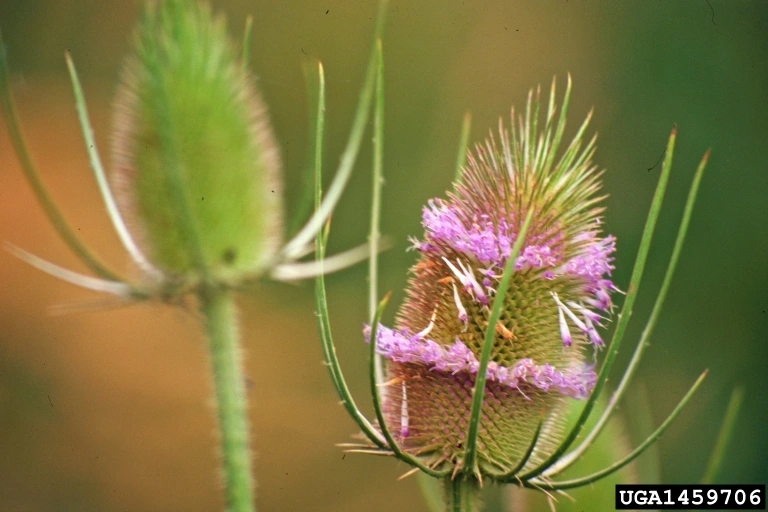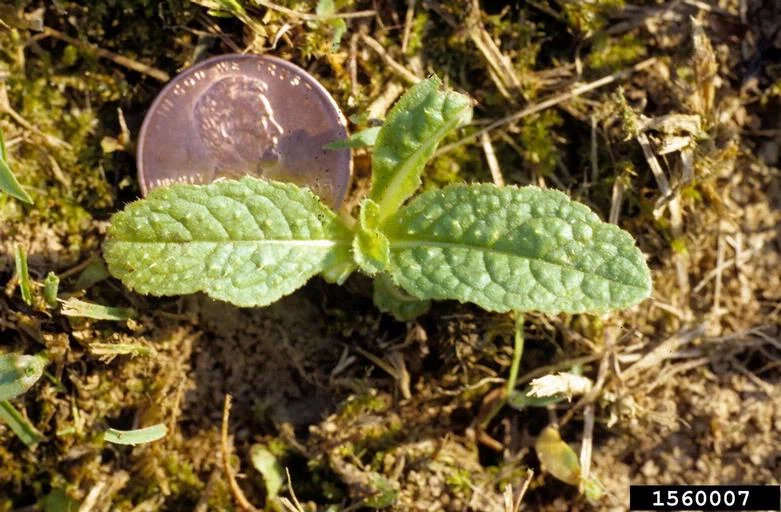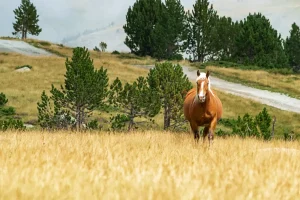
While some might find their spiky stature and unique flower heads charming, gardeners in Jefferson County, CO know better. This month, we’re turning our spotlight on the teasel, specifically Dipsacus fullonum (Common Teasel) and Dipsacus laciniatus (Cut-leaved Teasel). These tenacious biennials are classified as b-noxious weeds in Jefferson County, meaning they can be a real pain in the side of your carefully cultivated plots.
Systematic Classification
Dipsacus fullonum L.
| Kingdom | Plantae |
| Division | Magnoliophyta |
| Class | Magnoliopsida |
| Order | Dipsacales |
| Family | Dipsacaceae Juss. |
| Genus | Dipsacus L. |
| Species | Dipsacus fullonum L. |
Common Names: Common teasel, Fuller’s teasel
This information is derived from the USDA Plants Database and National Invasive Species Information Center.
Dipsacus laciniatus L.
| Kingdom | Plantae |
| Division | Tracheobionta |
| Class | Magnoliopsida |
| Order | Dipsacales |
| Family | Dipsacaceae Juss. |
| Genus | Dipsacus L. |
| Species | Dipsacus laciniatus L. |
Common Name: Cutleaf teasel
This information is derived from the USDA Plants Database and National Invasive Species Information Center.
Life Cycle and Identification
Teasels are biennial plants, meaning they complete their life cycle in two years. In the first year, teasel seeds germinate and emerge as a rosette of basal leaves that lie flat on the ground during spring. These leaves are smooth and lack the prickles that will develop later. Throughout the summer, the plant grows a tall, single stem.

In the second year, the stem elongates and becomes quite prickly. Flower buds form in a spiky oval head at the top of the stem. The flowers themselves are small and purple or white, blooming from the bottom of the head upwards over a period of weeks. By late summer/early fall, the flowers mature into brown, papery seeds. A single plant can produce thousands of seeds, which readily disperse by wind or sticking to animals.
Seed Production and Dispersal
Teasel’s prolific seed production and diverse dispersal methods are what make it such a successful and troublesome weed in Jefferson County. A single plant can generate thousands of lightweight, papery seeds in a single season. These readily disperse by wind, latching onto animals (zoochory), or floating on water currents. Human activities like mowing or using contaminated mulch can also unintentionally spread teasel seeds. This remarkable ability to reproduce and disperse allows teasel to rapidly colonize disturbed areas, outcompete native vegetation, and establish itself as a dominant force in local ecosystems.
Impact on Jefferson County
In Jefferson County, teasel poses a significant threat to both ecological and agricultural well-being. Its aggressive growth and prolific seed production displace native plants, reducing biodiversity and impacting wildlife habitat. Furthermore, teasel’s stature and root system can hinder crop growth and productivity in agricultural settings. These factors, combined with the physical hazards posed by the plant’s prickles, necessitate effective control measures to safeguard Jefferson County’s natural spaces and agricultural resources.
Teasel Control Methods
For small infestations, manual removal is the most effective method. Target young rosettes in early spring before they flower and set seed. Remember to wear gloves and pull up the entire rosette, including several inches of the taproot. For larger areas, selective herbicides can be a good option. However, it’s best to consult a professional before using any chemicals.
Conclusion
By understanding teasel’s biology and its detrimental effects, Jefferson County residents can play a vital role in controlling its spread. Through vigilance and proactive management strategies, we can safeguard the county’s natural ecosystems, agricultural productivity, and the overall well-being of our environment. Learn more about other invasive weeds like musk thistle in our blog here.




